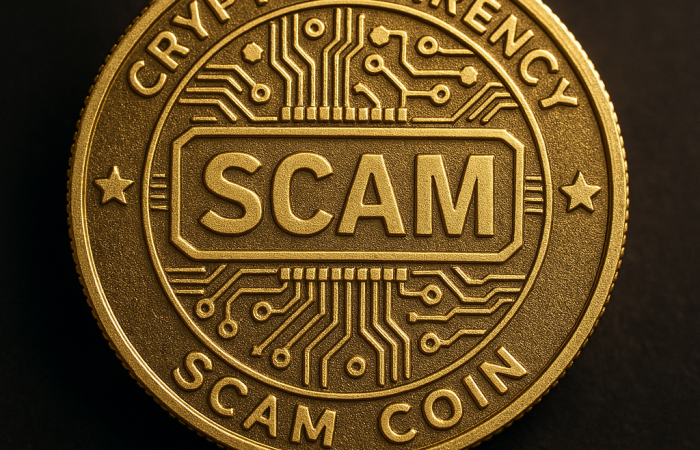As more and more people use mobile payment platforms like Apple Pay, cybercriminals are finding new ways to exploit this technology for their gain. One of the latest scams to target Apple Pay users is a phishing text message that pretends to be from Apple, urging users to click on a link and provide personal information.
This article will discuss how the Apple Pay scam works, what red flags to watch out for, and how to protect yourself from falling victim to this type of fraud.

What is the Apple Pay Scam Text, and How Does it Work?
The Apple Pay scam is a phishing scheme that typically starts with a text message. The message is sent from an unknown phone number and claims to be from Apple. The text message may say, “Apple Pay: Your contactless payment is currently suspended. To restore full access, please visit applecare-check.com”. The message is designed to create a sense of urgency and convince the recipient to act quickly.
If the user clicks on the link in the message, they are taken to a fake website that looks like the official Apple website. The website may ask the user to provide personal information such as their name, address, and Social Security number. They may also be asked to provide financial information such as their credit card number, expiration date, and security code.
Once the user has entered their information, the scammers can use it to steal their identity or make unauthorized purchases using their Apple Pay account.
In some cases, the scam text may also contain a malicious link that, when clicked, installs malware on the user’s device. This malware can then be used to steal the user’s personal and financial information without their knowledge.
The scammers may also use other tactics to make the scam appear more legitimate. For example, they may use official-sounding language or include Apple logos and branding in text messages and fake websites.
How to detect Apple Pay Scam Text?
Detecting a fake Apple Pay text message can be challenging, as scammers use a variety of tactics to make the message appear legitimate. However, several red flags can help users identify a scam:
- Check the Sender: The sender of the text message may not be the actual Apple Pay service but instead a fake number. If the number seems unfamiliar or is not from the expected country or region, it may be a fake.
- Look for Spelling and Grammar Mistakes: Scammers often make spelling and grammar errors in their messages, which can indicate that the message is not legitimate. A statement full of mistakes or using informal language is likely a scam.
- Check the URL: A legitimate Apple Pay message should include a URL that starts with “https://www.apple.com.” However, scammers often use URLs similar to the actual Apple Pay site but with slight variations, such as “applepay-check.com.” Always double-check the URL before clicking on any links.
- Be Wary of Urgency: Scammers use urgency to try and get users to act quickly without thinking. If a message says that immediate action is required to avoid consequences or to restore access to an account, it could be a scam.
- Verify with Apple: If you receive a suspicious message, it is best to verify with Apple directly. Apple’s official website and customer service can help determine whether a message is legitimate. Do not click on links or provide personal information until you have verified that the message is authentic.
How to Protect Yourself?
To protect yourself from the Apple Pay scam, it is essential to take the following steps:
- Do not click on suspicious links: If you receive a suspicious text message, do not click on any links within the message. Instead, verify the legitimacy of the message with Apple directly.
- Use two-factor authentication: Two-factor authentication adds an extra layer of security to your Apple Pay account. With two-factor authentication, you will be required to enter a code that is sent to your device before making a payment. This can help prevent unauthorized access to your account.
- Keep your device updated: Make sure your iPhone, iPad, or other device is updated with the latest software updates. These updates often include security patches and other improvements that can help protect against scams and other threats.
- Be cautious with personal information: Do not provide personal information to anyone who contacts you unsolicited, such as your Social Security number or credit card information. Only provide this information if you are confident that the request is legitimate.
If you have fallen victim to the Apple Pay scam or any other type of fraud, reporting it to the relevant authorities is essential.
Customer Experiences
Unfortunately, many people have fallen victim to the Apple Pay scam, losing money and personal information. One user reported receiving a text message claiming their Apple Pay account had been hacked and instructing them to click a link to resolve the issue.
Another user reported receiving a message claiming that their Apple Pay account had been locked and asking them to provide personal information to unlock it.
Apple Pay Scam Text Conclusion
The Apple Pay scam is a sophisticated phishing scheme that can be difficult to detect. However, knowing the red flags and taking steps to protect yourself can minimize your risk of falling victim to this type of fraud.
Always be cautious when receiving messages from unknown phone numbers, and never provide personal information unless you are sure it is a legitimate request from Apple.
If you are a victim, please let us know by commenting below, and if you have lost a significant amount of money to online scams, do not lose hope. We can help you recover your funds!


